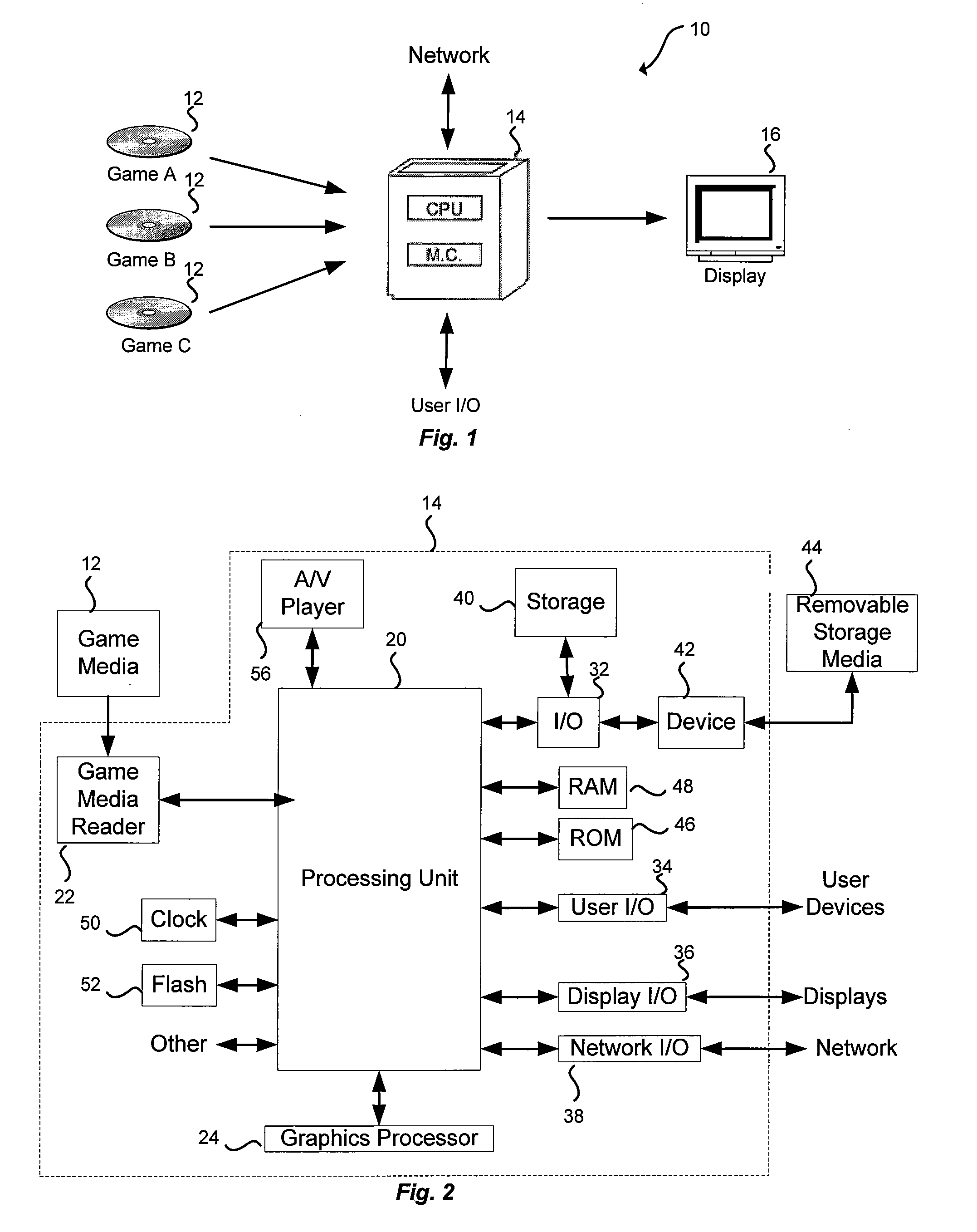Computer animation of simulated characters using combinations of motion-capture data and external force modelling or other physics models
a computer and character technology, applied in the field of character animation, can solve the problems of difficult to convey natural movement in difficult to achieve real-time response to user input, and limitations of mo-cap, and achieve the effects of simplifying the invisible skeleton, speeding up physics processing, and quick processing
- Summary
- Abstract
- Description
- Claims
- Application Information
AI Technical Summary
Benefits of technology
Problems solved by technology
Method used
Image
Examples
Embodiment Construction
Overview of Game Computing System
[0037]An improved character movement system for use in game animation in an interactive computer game is provided herein. In one aspect, character movement is performed according to motion-capture (mo-cap) data at times, according to unscripted dynamic movements at other times, and possibly a combination of the two at other times. A character can be represented by a set of body parts and joints connecting the body parts. Dynamic movements can be implemented with movement described by a set of internal forces (possibly changing over time) that are applied to the joints (simulating muscles, etc.) and / or by a set of external forces (simulating the application of external forces applied to body parts). The use of a set of external forces (by themselves or with other considerations) is often referred to as “rag-doll physics” because a character animated according to a set of external forces appears as a floppy rag-doll pushed by those forces.
[0038]In char...
PUM
 Login to View More
Login to View More Abstract
Description
Claims
Application Information
 Login to View More
Login to View More - R&D
- Intellectual Property
- Life Sciences
- Materials
- Tech Scout
- Unparalleled Data Quality
- Higher Quality Content
- 60% Fewer Hallucinations
Browse by: Latest US Patents, China's latest patents, Technical Efficacy Thesaurus, Application Domain, Technology Topic, Popular Technical Reports.
© 2025 PatSnap. All rights reserved.Legal|Privacy policy|Modern Slavery Act Transparency Statement|Sitemap|About US| Contact US: help@patsnap.com



